
The Ultimate Guide to Growing and Caring for Sorrel Plants
Are you ready to become a sorrel plant expert? Whether you’re a seasoned gardener or just starting out, this ultimate guide has everything you need to know to successfully grow and care for sorrel plants. From planting to harvesting, we’ve got you covered. Get ready to take your gardening skills to the next level and become a sorrel plant pro with our comprehensive guide. Let’s get started!
Table of Contents
ToggleOverview of Sorrel Plant
Description: General description and characteristics of the sorrel plant.
Sorrel plants are known for their vibrant green leaves and tart, lemony flavor. They are a hardy perennial herb that belongs to the buckwheat family. Sorrel plants typically grow to be about 12-18 inches tall and produce small, delicate flowers in the spring and summer. The leaves of the sorrel plant are the main attraction, as they can be used in a variety of culinary dishes, such as soups, salads, and sauces. The leaves are rich in vitamins and minerals, making them a healthy and flavorful addition to any meal. With the right care and attention, sorrel plants can thrive in your garden and provide you with a bountiful harvest year after year. So why not give sorrel plants a try and elevate your gardening game?
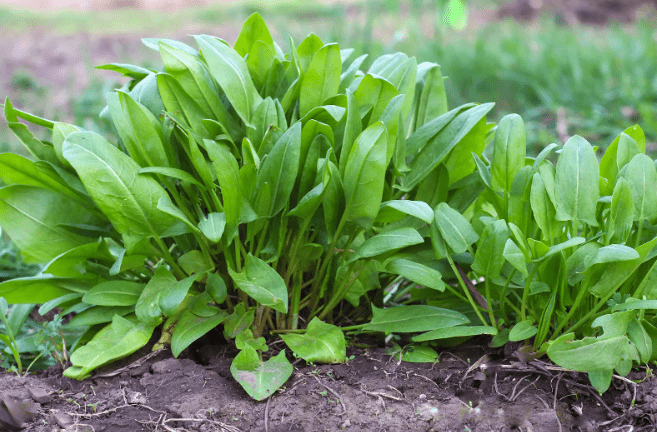
Origins and History: Brief history and origin of the sorrel plant.
Sorrel plants have a fascinating history and origin. They have been used for centuries in culinary and medicinal practices. The plant is believed to have originated in Europe and Asia, and has been cultivated for its unique flavor and health benefits. Sorrel was historically used as a natural remedy for scurvy due to its high vitamin C content. It has also been used in traditional cuisines around the world, adding a tangy and refreshing taste to various dishes. Sorrel plants have stood the test of time and continue to be a beloved addition to gardens and kitchens globally. Embracing the rich history and origin of the sorrel plant can add depth and culture to your gardening and cooking experience. So, why not explore the roots of this remarkable herb and incorporate it into your own culinary creations?
Varieties: Overview of different types of sorrel, such as common sorrel and red-veined sorrel.
Sorrel is a versatile and unique herb that comes in different varieties, such as common sorrel and red-veined sorrel. These varieties offer a range of flavors and colors that can add depth and vibrancy to your dishes. Common sorrel has a bright, lemony flavor that adds a tangy kick to salads, soups, and sauces. Red-veined sorrel, on the other hand, has a milder flavor with a striking red veining that makes it a visually stunning addition to any dish. Both varieties are packed with vitamins and minerals, making them a healthy and flavorful choice for any culinary creation. By exploring the different types of sorrel, you can elevate your cooking and bring a touch of sophistication to your dishes. So, why not take a chance and experiment with these unique and flavorful varieties of sorrel? Your taste buds will thank you!
Health Benefits of Sorrel Plant
Nutritional Profile: Key nutrients found in sorrel.
Sorrel is not only a flavorful addition to your dishes, but it also offers a wide range of key nutrients that are essential for your overall health. This unique plant is packed with vitamins such as vitamin C, vitamin A, and vitamin K, as well as minerals like potassium, magnesium, and calcium. These nutrients play a crucial role in supporting your immune system, promoting healthy vision, and maintaining strong bones and muscles. Additionally, sorrel is rich in antioxidants, which can help protect your body from harmful free radicals and reduce the risk of chronic diseases.
Incorporating sorrel into your diet can provide you with a delicious and nutritious boost. Whether you choose to add it to your salads, soups, or sauces, you can rest assured that you are not only enhancing the flavor of your dishes but also adding a wealth of essential nutrients to your diet. So, next time you’re at the grocery store, why not pick up some sorrel and elevate your cooking with its unique nutritional profile? Your body will thank you for it!
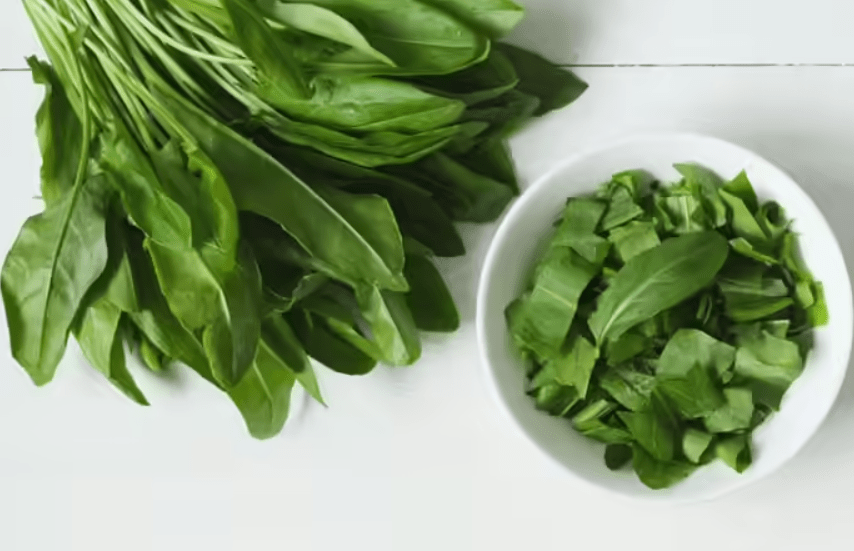
Digestive Health: How sorrel aids in digestion.
Sorrel is a powerhouse when it comes to aiding in digestion. It contains compounds that have been shown to stimulate the production of digestive enzymes, which can help improve the breakdown and absorption of nutrients from the foods we eat. This can lead to improved overall digestive health and a reduced risk of digestive issues such as bloating, gas, and indigestion. In addition, sorrel has been known to have mild laxative properties, which can help to promote regular bowel movements and prevent constipation. By incorporating sorrel into your diet, you can support your digestive system and ensure that your body is efficiently processing the nutrients it needs to thrive. So, if you want to support your digestive health, consider adding some sorrel to your next meal and enjoy the benefits it has to offer. Your digestive system will thank you for it!
Immune Boosting: Benefits for the immune system.
Sorrel is a powerhouse when it comes to boosting the immune system. It is packed with essential nutrients and antioxidants that can help strengthen your body’s natural defenses. By including sorrel in your diet, you can help protect your body from harmful pathogens and reduce the risk of getting sick. The vitamins and minerals found in sorrel, such as vitamin C and iron, play a crucial role in supporting a strong immune system. Vitamin C is known for its ability to enhance the production of white blood cells, which are key players in the immune response. Iron is important for the proper functioning of immune cells and can help prevent iron-deficiency anemia, which can weaken the immune system. Additionally, sorrel contains compounds that have anti-inflammatory and antimicrobial properties, further supporting immune health. By incorporating sorrel into your diet, you can give your immune system the boost it needs to keep you healthy and strong. So, next time you’re looking for ways to support your immune system, consider adding some sorrel to your meals and enjoy the delicious and immune-boosting benefits it has to offer. Your body will thank you for it!
How to Grow Sorrel Plant
Site Selection: Choosing the right location for planting.
When it comes to planting sorrel, choosing the right location is crucial for ensuring the success of your harvest. Sorrel thrives in well-drained soil with plenty of sunlight, so be sure to select a spot in your garden that receives at least six hours of sunlight per day. Additionally, make sure the soil is rich in organic matter and has a pH level between 6.0 and 7.0 for optimal growth.
Another important factor to consider when selecting a planting site is airflow. Adequate air circulation is essential for preventing diseases and promoting healthy plant growth. Avoid planting sorrel in areas that are prone to waterlogging or have poor air circulation, as this can lead to issues such as root rot.
Lastly, consider the proximity of your sorrel plants to other crops in your garden. Sorrel can attract certain pests and diseases, so it’s best to plant it away from other susceptible crops to minimize the risk of spreading any potential issues.
By carefully selecting the right location for planting your sorrel, you can set the stage for a successful and bountiful harvest. With the proper care and attention to site selection, you can enjoy the benefits of growing your own nutritious and delicious sorrel at home.
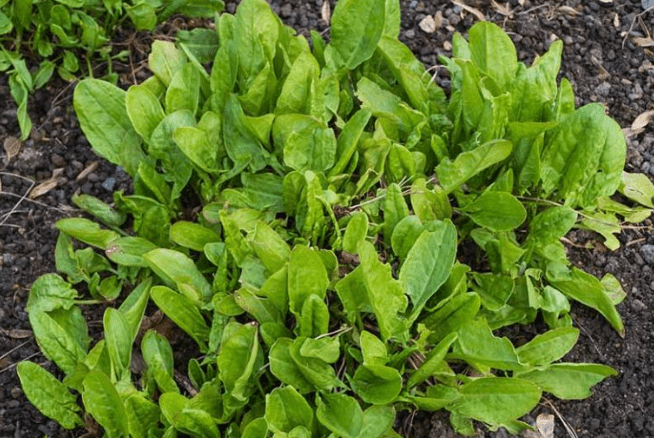
Soil Preparation: Preparing the soil for optimal growth.
Soil preparation is crucial for optimal plant growth. Before planting, it’s important to ensure that the soil is well-drained and nutrient-rich. This will provide a healthy environment for your plants to thrive and produce a bountiful harvest. Start by tilling the soil to break up any compacted areas and remove any debris or rocks. Adding organic matter, such as compost or aged manure, can help improve soil structure and fertility. Testing the pH of the soil can also be beneficial, as sorrel prefers a slightly acidic soil with a pH of around 6.0 to 6.5. Adjusting the pH if necessary will create an ideal growing environment for your sorrel plants. By taking the time to properly prepare the soil, you can set the stage for successful plant growth and ensure a productive harvest. Don’t underestimate the importance of soil preparation – it’s the foundation for a thriving garden.
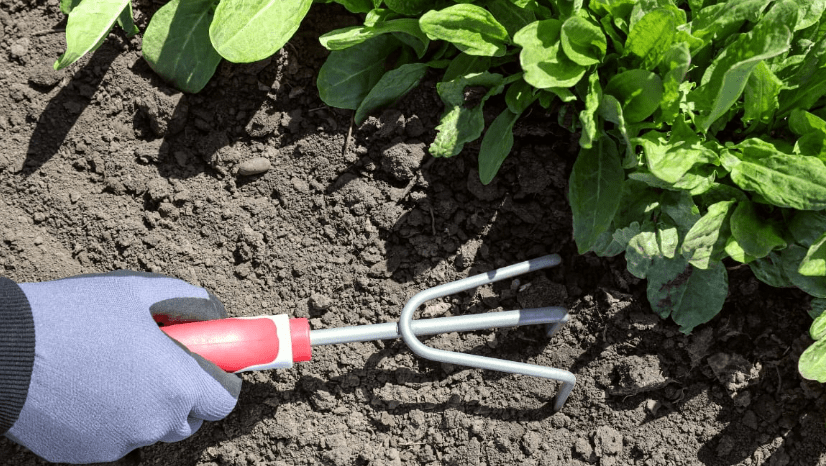
Planting Process: Step-by-step guide to planting sorrel seeds or seedlings.
To ensure the successful growth of your sorrel plants, it’s important to follow a step-by-step planting process. First, start by tilling the soil to break up any compacted areas and remove any debris or rocks that may inhibit the growth of your plants. This will create a healthy environment for your plants to thrive. Next, consider adding organic matter such as compost or aged manure to improve soil structure and fertility. This will provide essential nutrients for your sorrel plants to grow strong and healthy. Additionally, testing the pH of the soil is crucial as sorrel prefers a slightly acidic soil with a pH of around 6.0 to 6.5. Adjusting the pH if necessary will create an ideal growing environment for your sorrel plants. By taking the time to properly prepare the soil, you can set the stage for successful plant growth and ensure a bountiful harvest. Don’t underestimate the importance of soil preparation – it’s the foundation for a thriving garden. By following these steps, you can create the perfect environment for your sorrel plants to flourish and produce a plentiful harvest.
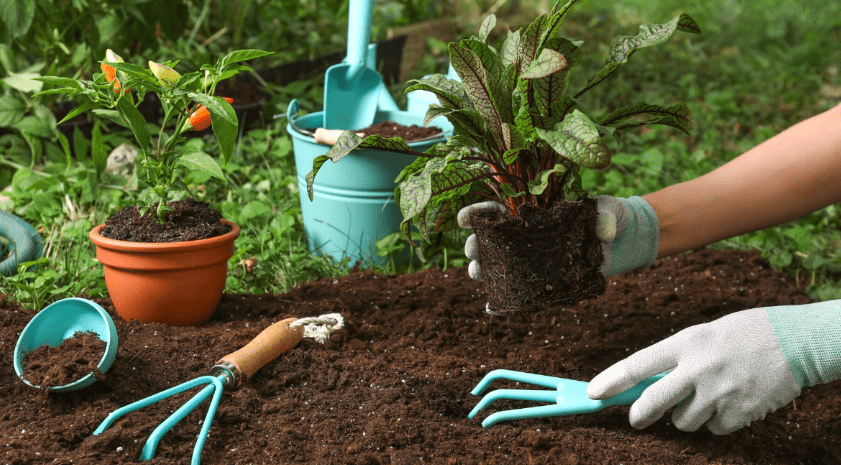
Caring for Sorrel Plant
Watering Requirements: How often and how much to water the sorrel plant.
When it comes to watering your sorrel plant, it’s important to find the right balance. Overwatering can lead to root rot, while underwatering can stunt growth and cause the leaves to wilt. To ensure your sorrel plant thrives, water it deeply once a week, allowing the soil to dry out slightly between waterings. This will encourage deep root growth and prevent waterlogged soil. Additionally, consider the environmental factors such as temperature and humidity when determining your watering schedule. During hot, dry weather, your sorrel plant may need more frequent watering to stay hydrated. By paying attention to your plant’s needs and adjusting your watering routine accordingly, you can create an optimal growing environment for your sorrel plant. Remember, consistency is key when it comes to watering – by maintaining a regular schedule, you can help your sorrel plant reach its full potential. So, take the time to understand the specific watering requirements of your sorrel plant and watch it thrive as a result.
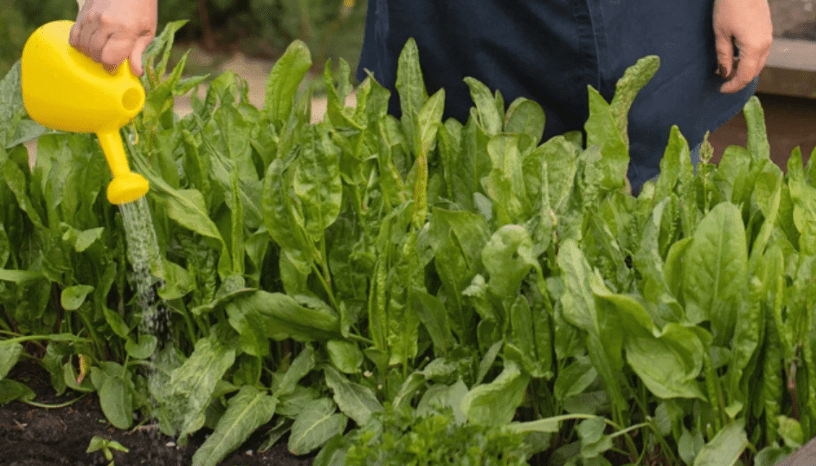
Fertilization: Best fertilizers and feeding schedule.
When it comes to fertilizing your sorrel plant, it’s important to choose a high-quality, balanced fertilizer. Look for a fertilizer that is rich in nitrogen, as this will help promote healthy, vigorous growth. You can also choose a slow-release fertilizer to provide a steady supply of nutrients to your plant over time. When it comes to feeding schedule, it’s best to fertilize your sorrel plant every 4-6 weeks during the growing season. Be sure to follow the manufacturer’s instructions for the specific fertilizer you choose, as over-fertilizing can lead to root burn and other issues. By providing your sorrel plant with the proper nutrients on a regular basis, you can ensure that it has everything it needs to thrive and produce an abundant harvest. So, take the time to select the best fertilizer for your sorrel plant and create a feeding schedule that will support its growth and overall health. With the right approach to fertilization, you can enjoy a bountiful crop of delicious sorrel.
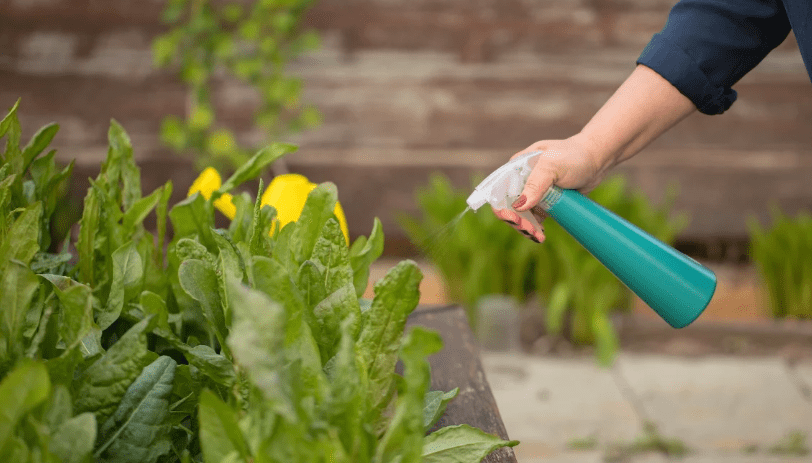
Pruning Tips: How and when to prune sorrel for healthy growth.
Pruning is essential for promoting healthy growth in your sorrel plants. It’s important to prune regularly to remove any dead or damaged leaves, as well as to encourage new growth. When pruning, be sure to use clean, sharp pruning shears to make clean cuts and avoid damaging the plant. It’s best to prune in the spring or early summer to encourage new growth and maintain the shape of the plant.
When pruning, focus on removing any yellow or damaged leaves, as well as any flowers that have finished blooming. This will help to stimulate new growth and keep the plant looking tidy. Additionally, by removing any dead or diseased foliage, you can prevent the spread of disease and ensure the overall health of your sorrel plant.
By following these pruning tips and providing your sorrel plant with the proper care and attention, you can promote healthy growth and enjoy a bountiful harvest of fresh, flavorful sorrel. So, take the time to prune your sorrel plants and watch as they thrive and flourish in your garden. With the right approach to pruning, you can ensure the health and vitality of your sorrel plants for years to come.
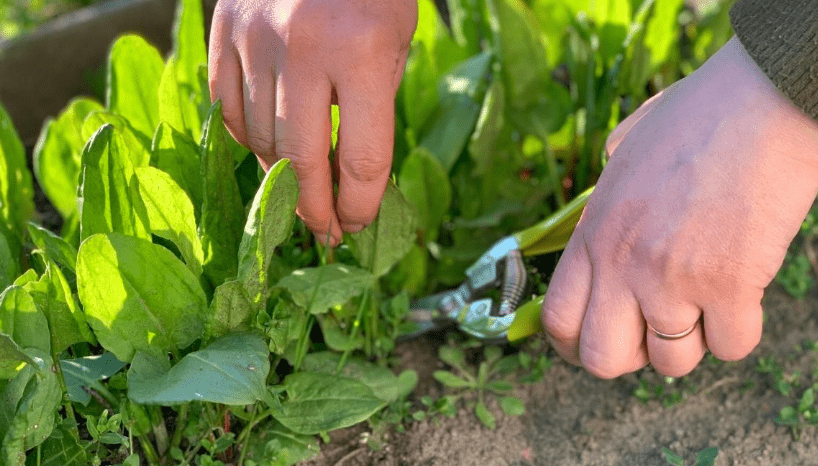
Pest and Disease Management: Common pests and diseases and how to handle them.
Pest and disease management is crucial to maintaining the health and vitality of your plants. It’s important to be aware of common pests and diseases that can affect your plants and take proactive measures to handle them. One common pest that can affect your plants is aphids. These small insects can suck the sap from your plants, causing them to become weak and unhealthy. To handle aphids, you can use insecticidal soap or neem oil to effectively control and eliminate them. Another common pest is spider mites, which can cause damage to the leaves of your plants. To handle spider mites, you can use a strong spray of water to knock them off the leaves and reduce their numbers. In terms of diseases, powdery mildew is a common issue that can affect your plants. To handle powdery mildew, you can use a fungicidal spray to control the spread of the disease. It’s important to regularly inspect your plants for any signs of pests or diseases and take immediate action to address the issue. By implementing effective pest and disease management strategies, you can ensure the health and longevity of your plants. Remember, prevention is key, so taking proactive measures to protect your plants from pests and diseases is essential for a successful and thriving garden.
Harvesting Sorrel Plant
Is an important step in maintaining a healthy and flourishing garden. When harvesting sorrel, it’s important to do so carefully to ensure the continued growth and productivity of the plant. To harvest sorrel, simply use a pair of scissors or garden shears to cut the leaves from the plant, leaving at least 1-2 inches of growth above the soil. This will allow the plant to continue producing new leaves and promote healthy regrowth.
When harvesting sorrel, it’s best to choose leaves that are young and tender, as they will have the best flavor and texture. Avoid harvesting too many leaves at once, as this can stunt the plant’s growth and reduce its productivity. Instead, harvest only as much as you need, allowing the plant to continue growing and providing a continuous supply of fresh sorrel leaves.
After harvesting, be sure to wash the leaves thoroughly to remove any dirt or debris. Sorrel leaves can be used in a variety of culinary dishes, adding a tangy and citrusy flavor to salads, soups, and sauces. By properly harvesting and using sorrel, you can enjoy the delicious and nutritious benefits of this versatile plant while ensuring its continued growth and vitality in your garden. Happy harvesting!
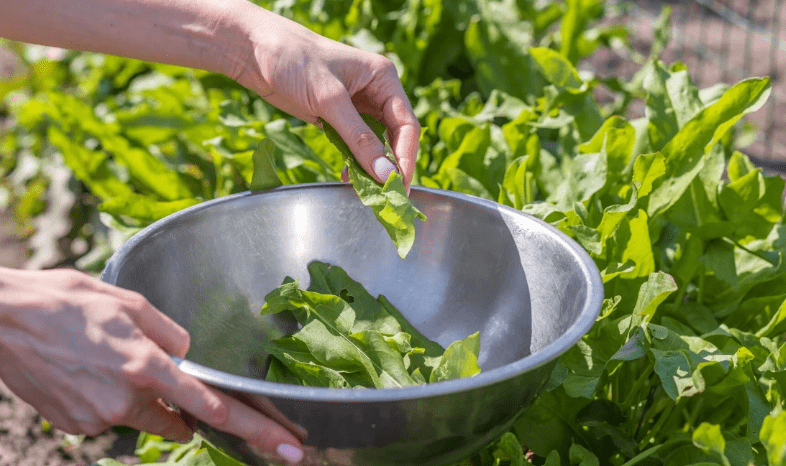
Culinary Uses of Sorrel Plant
Fresh Sorrel: How to use fresh sorrel in salads and as a garnish.
Fresh sorrel is a versatile and delicious herb that can be used in a variety of culinary dishes. When harvesting sorrel, it’s important to choose young and tender leaves for the best flavor and texture. Be sure to only harvest as much as you need to avoid stunting the plant’s growth. After harvesting, be sure to wash the leaves thoroughly to remove any dirt or debris.
Fresh sorrel leaves can be used to add a tangy and citrusy flavor to salads, soups, and sauces. They can also be used as a garnish to add a pop of color and flavor to your dishes. With its unique and refreshing taste, fresh sorrel is a great addition to any culinary repertoire.
So next time you’re looking to add a burst of flavor to your dishes, consider using fresh sorrel. Its versatility and delicious taste make it a must-have ingredient for any home cook. Happy cooking!
Cooked Dishes: Popular recipes that feature sorrel, such as soups and sauces.
Sorrel is a versatile and delicious ingredient that can add a burst of flavor to a variety of cooked dishes. One popular way to use sorrel is in soups, where its tangy and citrusy flavor can add a refreshing twist to traditional recipes. It can also be used in sauces, where its unique taste can elevate the flavor profile of the dish. Whether you’re making a creamy sorrel soup or a tangy sorrel sauce, the possibilities are endless when it comes to incorporating this flavorful herb into your cooking. With its vibrant green color and refreshing taste, sorrel is a great way to add a pop of flavor to your culinary creations. So next time you’re in the kitchen, consider adding sorrel to your cooked dishes for a delicious and unique twist. Happy cooking!
Sorrel Plant in Companion Planting
Companion Plants: Best plants to grow alongside sorrel.
Sorrel is a fantastic plant to grow in your garden, and it also has some great companion plants that can help it thrive even more. Some great companions for sorrel include lettuce, spinach, and chard. These plants all have similar growing conditions and can benefit from being planted alongside each other. Additionally, planting sorrel alongside these companion plants can help to naturally repel pests and promote healthy growth.
Another great companion plant for sorrel is garlic. Garlic is known to repel pests and can help to keep your sorrel plants healthy and pest-free. Plus, garlic is a versatile and delicious herb that can be used in a variety of dishes, making it a great addition to any garden.
Overall, planting sorrel alongside these companion plants can help to create a healthy and thriving garden. So if you’re looking to add some flavorful and versatile plants to your garden, consider planting sorrel alongside these companion plants for a successful and delicious harvest. Happy gardening!
Benefits: How sorrel benefits its companion plants and the overall garden.
Sorrel is a fantastic addition to any garden, and it offers a variety of benefits to its companion plants and the overall garden. When planted alongside other herbs and vegetables, sorrel can help to improve the health and vitality of the entire garden. For example, planting sorrel near beans and peas can help to improve their growth and productivity. Sorrel also helps to improve the soil by adding nutrients and preventing the growth of weeds, which benefits the surrounding plants. Additionally, planting sorrel alongside these companion plants can help to naturally repel pests and promote healthy growth. Another great companion plant for sorrel is garlic. Garlic is known to repel pests and can help to keep your sorrel plants healthy and pest-free. Plus, garlic is a versatile and delicious herb that can be used in a variety of dishes, making it a great addition to any garden. Overall, planting sorrel alongside these companion plants can help to create a healthy and thriving garden. So if you’re looking to add some flavorful and versatile plants to your garden, consider planting sorrel alongside these companion plants for a successful and delicious harvest. Happy gardening!
Common Issues and Solutions
Yellowing Leaves: Causes and remedies.
If you notice that the leaves of your plants are turning yellow, it may be a sign of an underlying issue that needs to be addressed. There are several potential causes of yellowing leaves, including overwatering, nutrient deficiencies, and pest infestations. To remedy this issue, it’s important to identify the specific cause and take appropriate action.
First, check the soil moisture levels and adjust your watering schedule if necessary. Overwatering can lead to root rot and nutrient deficiencies, which can cause yellowing leaves. Ensure that your plants are receiving the right amount of water for their specific needs.
Next, consider the nutrient levels in the soil. Yellowing leaves can be a sign of nutrient deficiencies, such as nitrogen, iron, or magnesium. Fertilize your plants with a balanced fertilizer to replenish any lacking nutrients and promote healthy leaf growth.
Additionally, inspect your plants for any signs of pest infestations. Common pests, such as aphids or spider mites, can cause damage to the leaves and lead to discoloration. Use organic pest control methods to eliminate any pests and protect your plants from further damage.
In conclusion, addressing the issue of yellowing leaves requires careful observation and proactive measures. By identifying the specific cause and taking appropriate action, you can restore the health and vibrancy of your plants. Keep an eye on your garden and take the necessary steps to ensure that your plants thrive and flourish. Happy gardening!
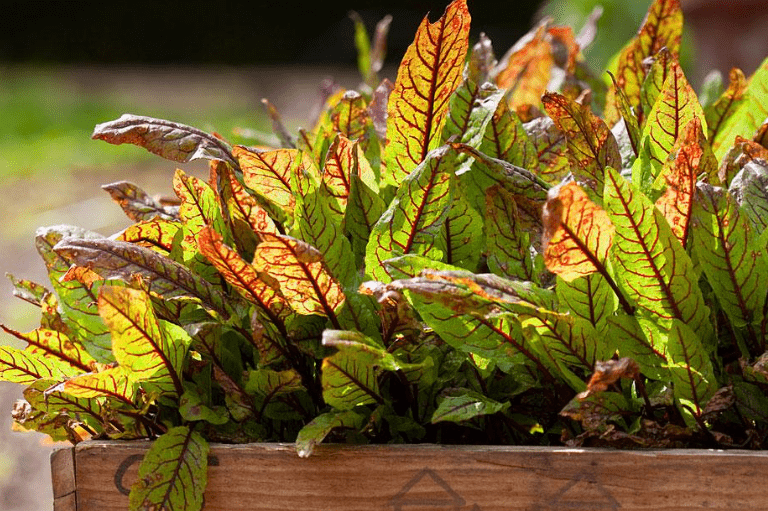
Root Rot: Prevention and cure.
Root rot is a common problem for many gardeners, but it can be prevented and cured with the right techniques. One of the best ways to prevent root rot is to ensure that your plants have proper drainage. Make sure your pots have drainage holes and avoid overwatering your plants. It’s also important to use well-draining soil to prevent water from pooling around the roots. Additionally, inspect your plants for any signs of pest infestations. Common pests, such as aphids or spider mites, can cause damage to the leaves and lead to discoloration. Use organic pest control methods to eliminate any pests and protect your plants from further damage. If you do notice signs of root rot, such as wilting leaves or a foul odor, it’s important to take action quickly. Repotting your plant in fresh, well-draining soil and cutting away any affected roots can help to cure the root rot and save your plant. In conclusion, addressing the issue of root rot requires proactive measures and careful observation. By taking the necessary steps to prevent and cure root rot, you can ensure the health and vibrancy of your plants. So keep an eye on your garden and take the necessary steps to ensure that your plants thrive and flourish. Happy gardening!
In conclusion, growing and caring for sorrel plants is an easy and rewarding experience. By following the tips and advice provided in this guide, you can ensure that your sorrel plants thrive and provide you with an abundance of delicious and nutritious leaves. With proper care and attention, you can enjoy a bountiful harvest of sorrel for years to come. So why wait? Start growing and caring for sorrel plants today and enjoy the many benefits they have to offer.
Frequently asked questions And Answer
Sorrel is a leafy green herb with a tangy, lemony flavor that adds a unique twist to your dishes. It’s a great addition to salads, soups, and sauces, and it’s packed with nutrients like vitamins A and C. Plus, it’s easy to grow and care for, making it a must-have for any home garden.
Sorrel can be grown from seeds or transplanted from a nursery. Plant it in well-draining soil and place it in a sunny spot in your garden. Water it regularly, but be careful not to overwater, as sorrel doesn’t like soggy soil. You can also fertilize it lightly to promote healthy growth.
You can start harvesting sorrel leaves when the plant is about 8 inches tall. Simply snip off the outer leaves, leaving the inner ones to continue growing. Use the leaves fresh in your cooking, or freeze them for later use. Just be sure to wash the leaves thoroughly before using them.
Yes, sorrel can be grown in a pot indoors as long as it receives plenty of sunlight. A south-facing window is ideal for indoor sorrel plants. Just be sure to water it regularly and provide proper drainage to prevent root rot.
Sorrel is relatively resistant to pests and diseases, but you may encounter issues with aphids or slugs. Keep an eye out for these pests and treat them with natural remedies or insecticidal soap if necessary.
Yes, you can propagate sorrel by taking cuttings from an established plant. Simply snip off a healthy stem with a few leaves and place it in water until it develops roots. Then, plant it in soil and care for it as you would a new seedling.
Sorrel is a fast-growing herb and can be ready for harvest in as little as 8-10 weeks after planting. With proper care, you can enjoy a continuous harvest throughout the growing season.
Sorrel can be used in a variety of dishes, from sorrel soup to sorrel pesto. It pairs well with fish, eggs, and potatoes, and can even be used to make a tangy sorrel sauce for pasta. Get creative and experiment with this versatile herb in your cooking!
